The Samsung Galaxy Tab S2 Review
by Brandon Chester on October 15, 2015 8:00 AM ESTDisplay Analysis
Before getting into our typical display analysis, I wanted to address a question that I'm sure some people have. A quick examination of a Tab S2 8.0's subpixel arrangement confirms that the smaller model uses a PenTile subpixel arrangement, and there's significant artifacting on the edges of icons and text, with the issue being very pronounced with thin weighted fonts. This is a big disappointment for users who prefer small tablets, and I would almost hesitate to recommend the smaller model for that reason alone because of how prevalent the issue is.
While the smaller model of the Tab S2 uses diamond PenTile, the Tab S2 9.7" does use an RGB-like subpixel arrangement, and it's essentially the same as the one used on the original Tab S 10.5. In practice there aren't really any artifacts as a result of the subpixels not being lined up exactly like a conventional LCD display, and it looks every bit as sharp as the iPad Air 2 which is exactly what I had hoped for.
To test the various attributes of the Tab S2 9.7's display I've run it through out standard display workflow. All measurements are done with an X-Rite i1Pro 2 spectrophotometer, and in the case of LCD devices the contrast measurements are done with an i1Display Pro colorimeter. SpectraCal's CalMAN 5 software is used for measuring and collecting data, and for generating graphs that are relatively easy to understand.
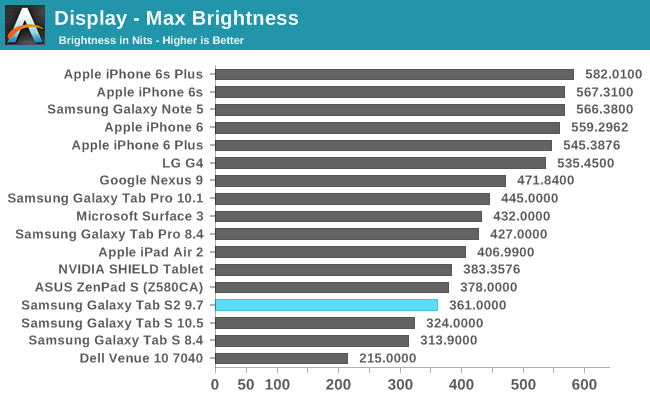
The Average Picture Level (APL) of an image can be thought of as a percentage expressing the luminance relative to a 100% white display. Since AMOLED displays target a given power consumption but can save power by turning off black pixels they can push a higher maximum brightness when the display's APL is low. Above you can see how the maximum brightness of white scales with average picture level. Real world use cases tend to be somewhere around 80% APL, and while there are always exceptions, this trend has continued with Google's new guidelines for designing Material Design applications. What's important about this chart is it shows that in most scenarios the Tab S2 9.7 actually isn't any dimmer than a tablet like the iPad Air 2, and much brighter than the original Tab S.
As for contrast, there's no point in displaying a chart, as Samsung's AMOLED displays can simply shut off pixels and achieve infinite contrast and true blacks. There's really nothing that comes close on any LCD-based tablet, and the true blacks of AMOLED displays simply become even more stunning as you scale up from a phone to a tablet, and again from a tablet to a television.
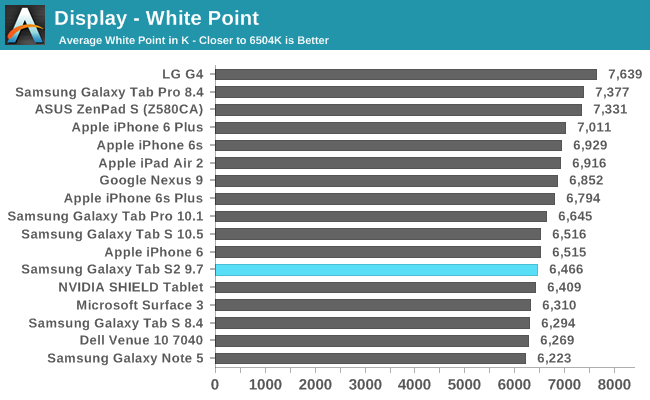
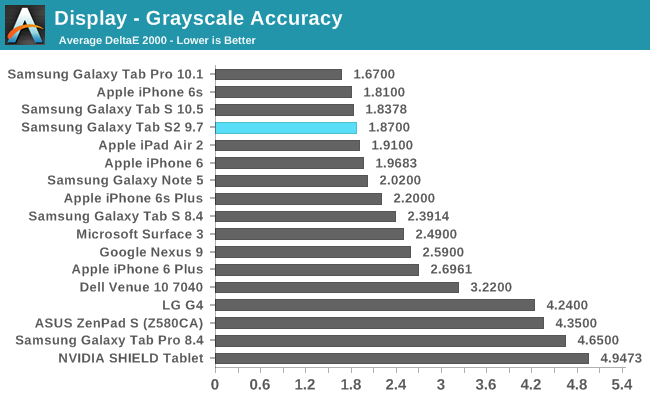
Samsung's AMOLED calibration has improved tremedously in recent years, and the Tab S2 9.7 is no exception. The greyscale has a very high level of accuracy, with very low errors across the board. When you move past 70% white there is a degree of green tinting to whites and greys that appears, and this is noticeable during general use. I did find it to be somewhat bothersome, but I think this is mostly due to the fact that I test and use many different devices regularly. If the Tab S2 9.7 was my only tablet I would be perfectly happy with the level of calibration, and I would get used to the good but not perfect calibration when shades approach 100% white.
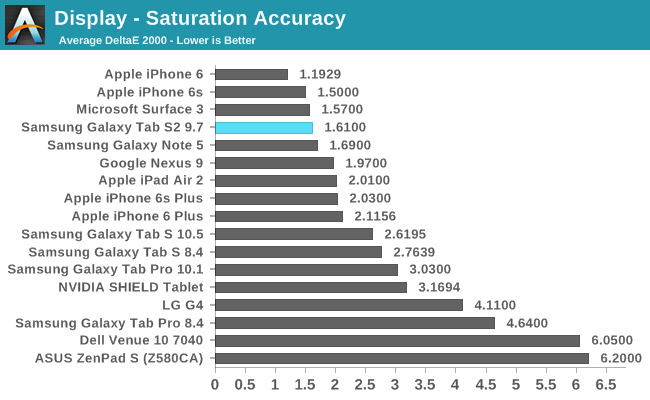
Saturation accuracy on the Tab S2 9.7 is phenomenal. It's better than every other tablet except for the Microsoft Surface 3, and at this point you would really be hard pressed to see errors in the rendering of pure primary and secondary colors. Most of the errors seem to be at the very extreme 100% saturations, and in daily use I never felt like the appearance of colors was off in any way.
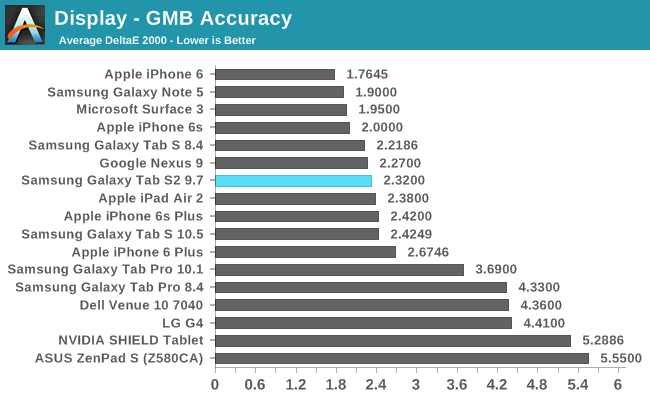
In the Gretag-Macbeth ColorChecker test we again see a very high level of color accuracy on the Tab S2 9.7. The biggest contribution to errors are actually the grey shades that are tested, along with some slight errors in red and blue based color mixtures. To criticize these results would honestly be pedantry, as unless your tablet workflow involves editing videos and photos with absolutely no visible color errors the Tab S2 9.7 provides a more than sufficient level of accuracy.
There's really not much else to say about the Tab S2 9.7's display. Samsung has really done a great job with calibrating the displays on recent AMOLED devices, and the Tab S2 9.7 offers a display that is just as good as any other tablet. One could argue that the true blacks actually put the Tab S2 9.7 ahead of the competition, and I would be inclined to agree. My only complaint is that the iPad Air 2 with its AR coating tends to be a bit more usable outside and in other scenarios where there are heavy reflections. There's really no way to conclude which tablet offers the absolute best display, but I think it would be correct to say that in most cases the Tab S2 9.7's display is as good, if not better than any other tablet on the market.


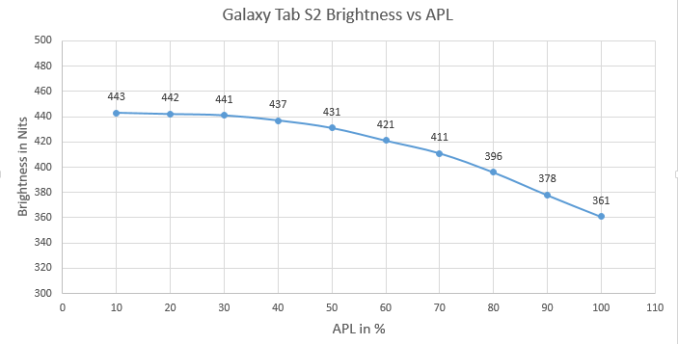
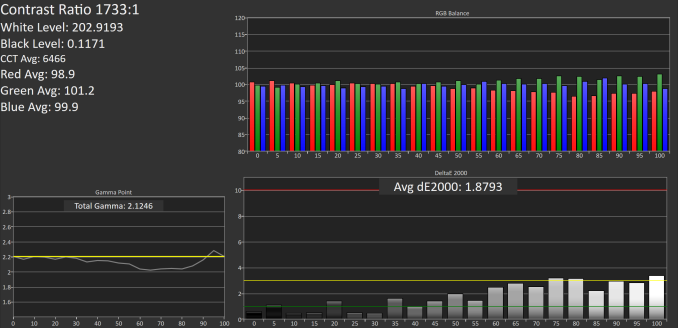

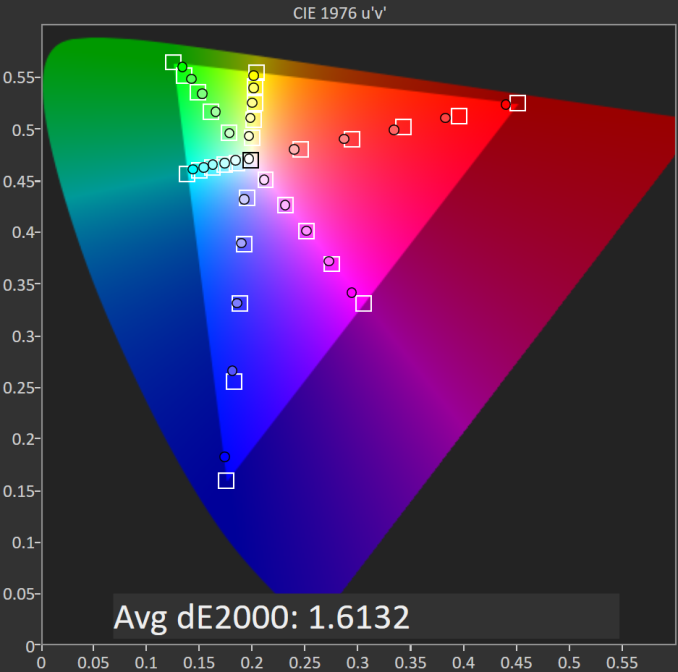










162 Comments
View All Comments
extide - Thursday, October 15, 2015 - link
You only ever get bluescreens with bad hardware or really sketchy drivers. It is not possible for pure user mode code to cause a blue screenR. Hunt - Thursday, October 15, 2015 - link
Sure, much better if you want is a laptop replacement that can occasionally serve as a tablet, but as a pure tablet, the app store, which is still a wasteland, lets it down.kmmatney - Friday, October 16, 2015 - link
This. I was really disappointed with the App store, and there is still a big disconnect between Apps and normal windows programs, even in Windows 10. I ending up selling my Windows tablet - done for now. Might try again in a few years.thedons1983 - Saturday, October 17, 2015 - link
Completely different product, and is terrible as a tablet, even with Windows 10... The windows store is an absolute joke, moreover.colonelclaw - Thursday, October 15, 2015 - link
Considering that Samsung themselves manufacture the very processors in Apple kit, then why on earth are their own tablets so pathetically underpowered? According to these benchmarks the Air2/6S is anything between 2 and 3 times faster, a crazy difference. What's going on?blackcrayon - Thursday, October 15, 2015 - link
Maybe it's cost - Apple pays Samsung to fabricate Apple designed chips. But maybe Samsung doesn't want to pay Samsung (so to speak) to develop a similar design or would just rather use an existing chip to save development costs. After all, Samsung is incorporating close to "off the shelf " ARM cores (lower dev cost) vs. Apple's custom designed cores, & Apple is in the position to specifically optimize their OS and developer tools for it.limitedaccess - Thursday, October 15, 2015 - link
There is a two fold issue here.Apple uses their latest and highest power design for their largest SKUs. While Samsung for the Tab S line for two generations has basically used what can be considered their last gen design.
blackcrayon - Thursday, October 15, 2015 - link
(And as for the GPU, Apple is just using more / faster GPU cores than Samsung is choosing to, again cost I presume since nothing stops Samsung from using another especially in a tablet).lilmoe - Thursday, October 15, 2015 - link
The SoC price difference is easily mitigated with the price difference of the screen. For the same size/resolution, AMOLED is considerably more expensive than the best LCD.Outside of benchmarks, for the average users, the performance difference isn't THAT perceivable. Anandtech are heavily concentrating their "performance difference" pm browser javascript benchmarks, which aren't the whole picture when it comes to browsing speed. Both browsers on the Tab and iPad perform almost the same as most users see it. Don't forget, Android on Samsung's devices take full advantage of all the extra cores.
As Samsung sees it, users most probably prefer a better screen over faster performance. There's lots of merit to that compromise.
FlyBri - Thursday, October 15, 2015 - link
@lilmoe I have to totally disagree with you that the SoC price difference is mitigated with the price difference of the screen. Don't get me wrong, AMOLED screens are great (I have a Note 5 and Tab S 10.5), but the LCD screen on an iPad Air 2 is pretty damn good (I have one as well), and would be more than happy using that LCD if that meant getting a much more powerful SoC and a better overall tablet for the same price, or cheaper (which the Air 2 is). And you say that for average users the performance difference isn't perceivable -- except if you're playing graphics intensive games, which some average users do -- and the iPad Air 2 completely blows the Tab S2 out of the water, even though the Air 2 is already a year old. Also, many "average users" do a lot of web browsing and reading -- heck, Samsung copied the iPad's 4:3 aspect ratio because they felt more users are doing just that. Yet in exactly those scenarios, the Tab S2's battery life is absolutely horrible and completely unacceptable.People may prefer a better screen over performance, but in the specific scenario between the screens in the Air 2 and Tab S2, I don't think there is really any merit to excuse the difference in performance, battery life, and overall tablet experience. If you can now get an Air 2 for $350-400, the Tab S2, even if you factor in the more expensive AMOLED screen, is worth $300, maybe $350, but not $500. If Samung had to switch to a top quality LCD panel to give me a true Air 2 rival in terms of performance, battery life, tablet experience, etc., I'd happily go with that every single time.